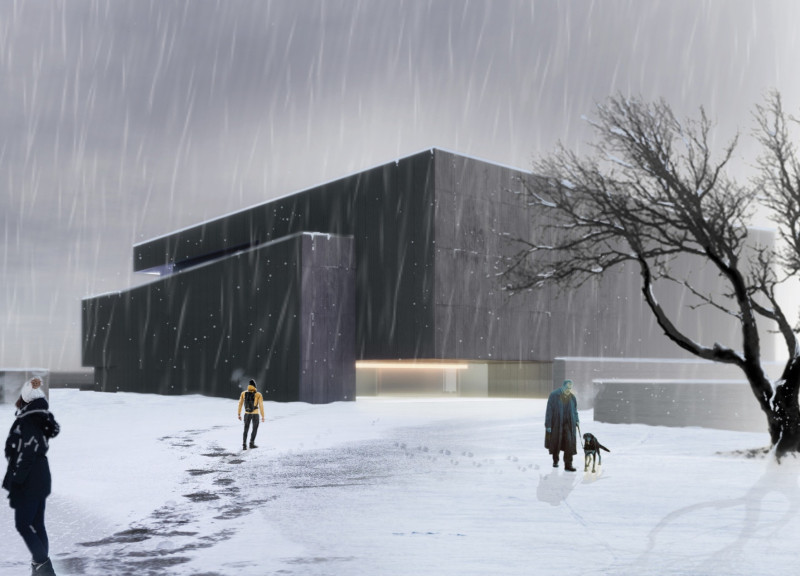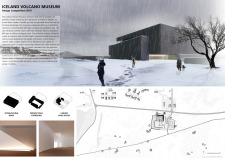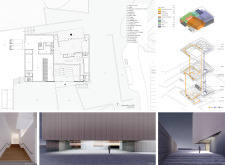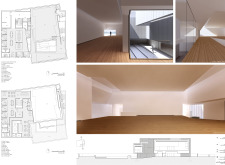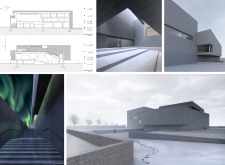5 key facts about this project
The Iceland Volcano Museum is an architectural project situated in the Myvatn region of Iceland. This facility serves as an informative center dedicated to the study and appreciation of volcanic activity, offering educational resources for both locals and visitors. Its design is an exploration of how architecture can respond to and integrate with the natural landscape while providing functional spaces for community engagement and learning.
The museum comprises interlocking volumes that reflect the organic forms of volcanic structures. This configuration allows for a dynamic interaction between the indoor and outdoor environments, facilitating unobstructed views and a sense of connectivity with the surrounding landscape. The overall aesthetic picks up cues from the rugged nature of Iceland, lending a unique visual identity that is both appropriate and context-sensitive.
Unique Design Approaches
The design of the museum employs a concept of varying mass and scale, which is distinctive in its treatment of space. The central atrium features a cavernous quality that serves as the heart of the museum. This area is designed to maximize natural light through strategic openings, creating an atmosphere that evokes the experience of being within a geological formation.
The use of materials is deliberate, combining concrete, wood, glass, and stone to create a dialogue between the museum and its setting. Concrete provides the structural backbone, offering durability against the elements. Wood elements are included to introduce warmth to the interior spaces, while glass sections enhance visibility and transparency, promoting engagement with the external landscape. Stone is used to strengthen the connection to the volcanic environment, integrating the building into its geographical context.
Functional Elements
The museum’s layout includes various functional areas essential for its role as an educational hub. Exhibition spaces are designed to accommodate a range of displays and installations about volcanic activity, while classrooms and workshop areas facilitate hands-on learning experiences. Public amenities such as a café and reception area transition visitors into the museum’s core, ensuring a seamless flow of movement throughout the building.
The design incorporates sustainable principles, optimizing energy use through passive systems that harness natural light and ventilation. This approach is essential given Iceland's climatic conditions and emphasizes the project’s commitment to environmental responsibility.
For a thorough understanding of the Iceland Volcano Museum, it is encouraged to explore its architectural plans, sections, and designs. These documents provide deeper insights into the project's innovative structure and layout, offering a complete picture of how architecture can merge with the natural environment while serving educational purposes.


